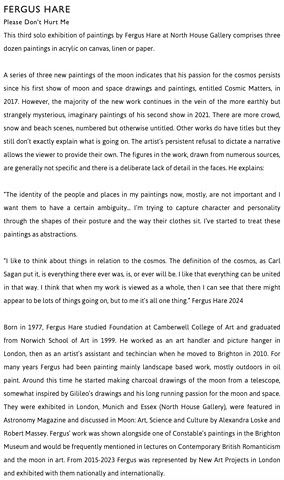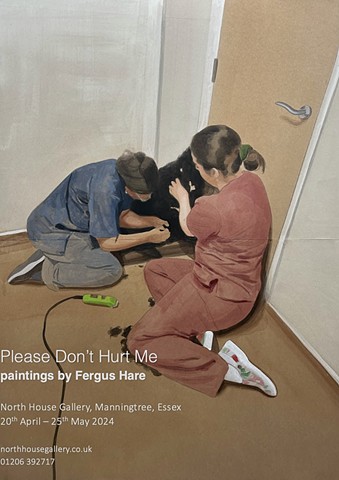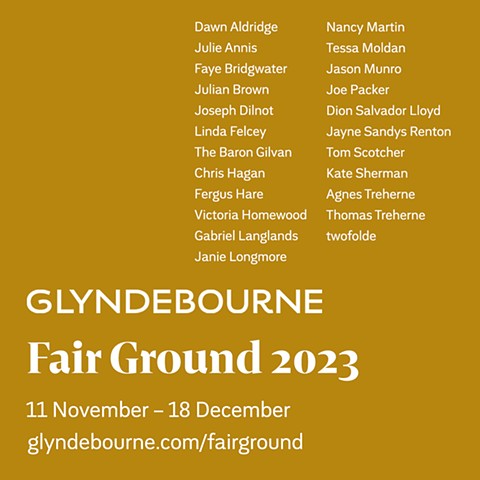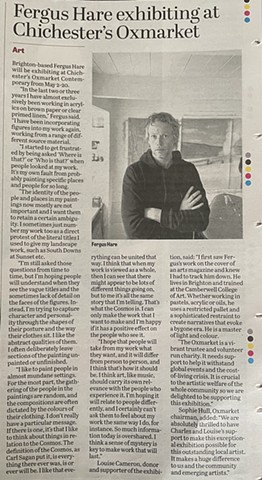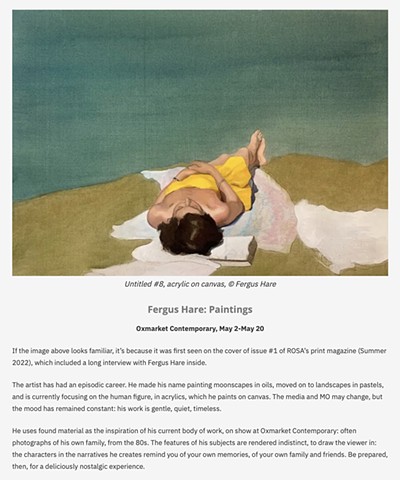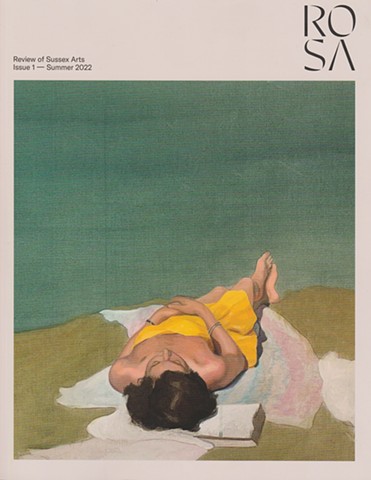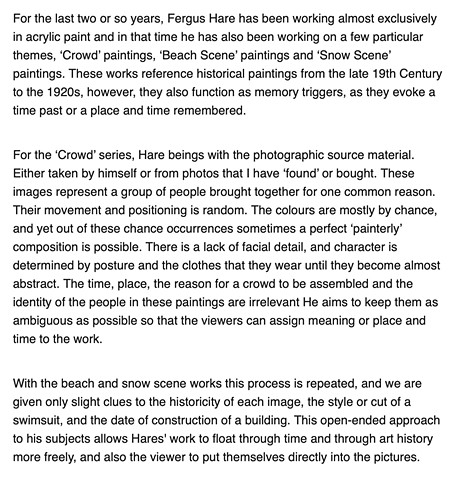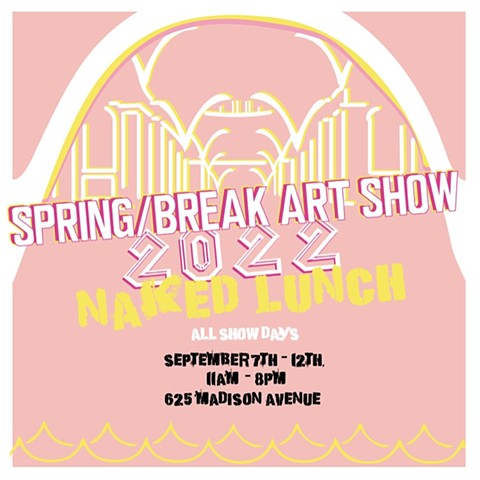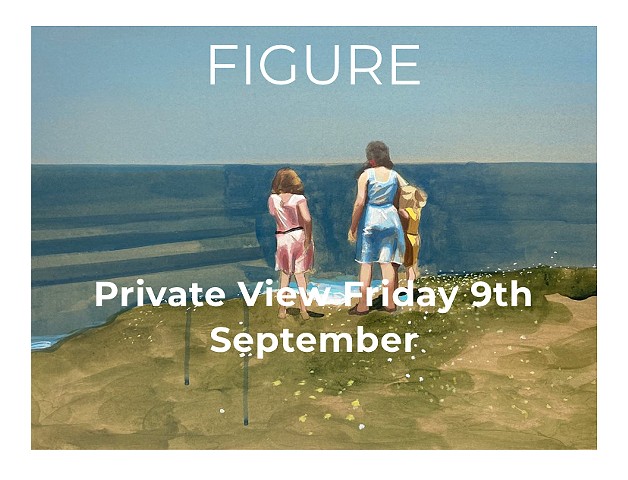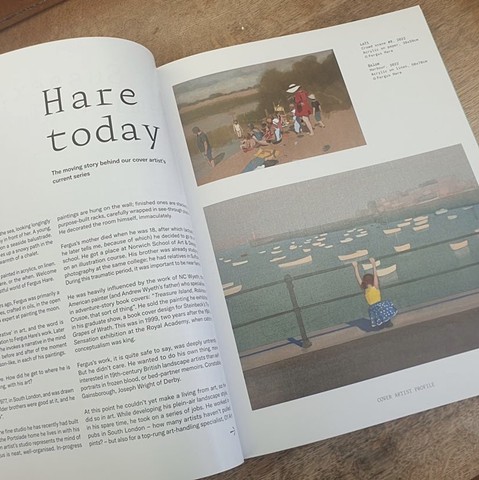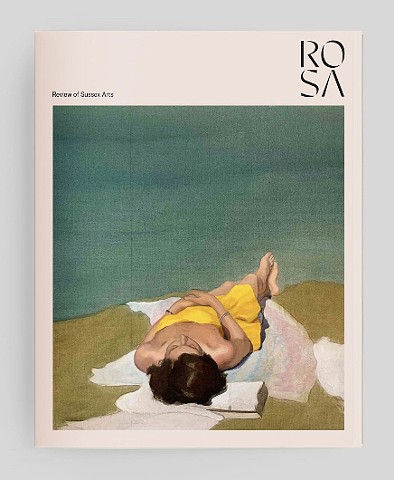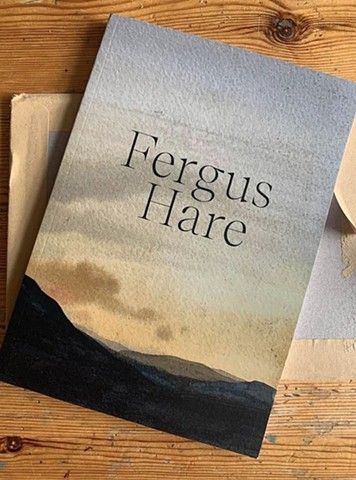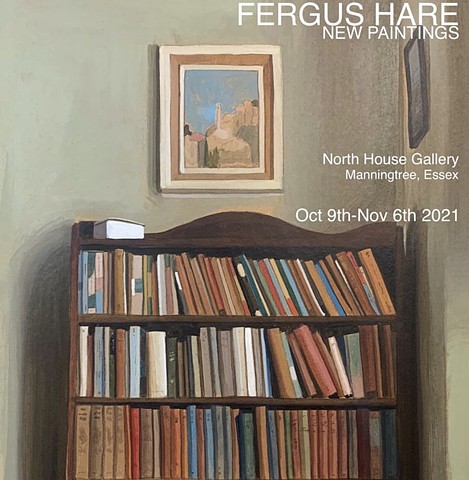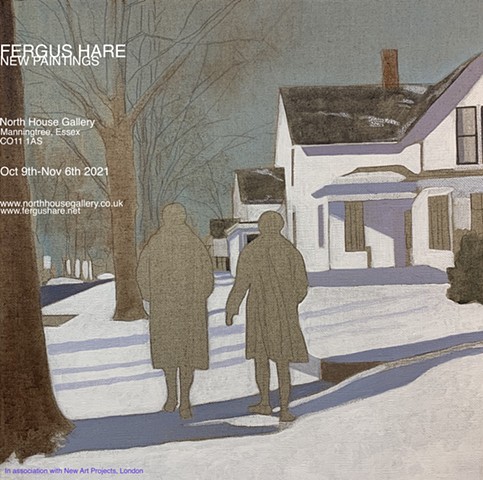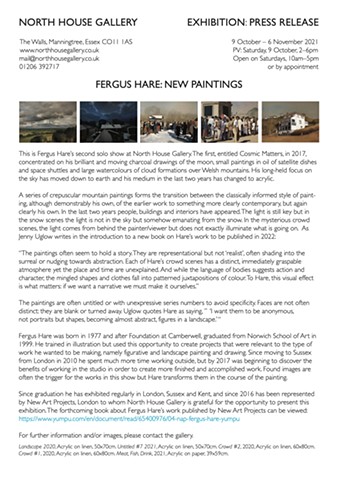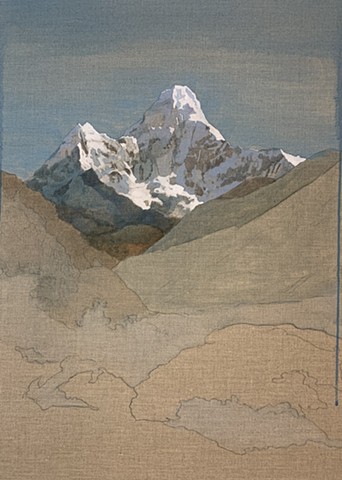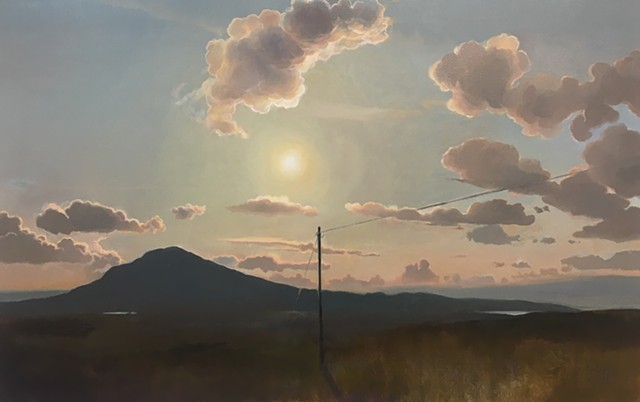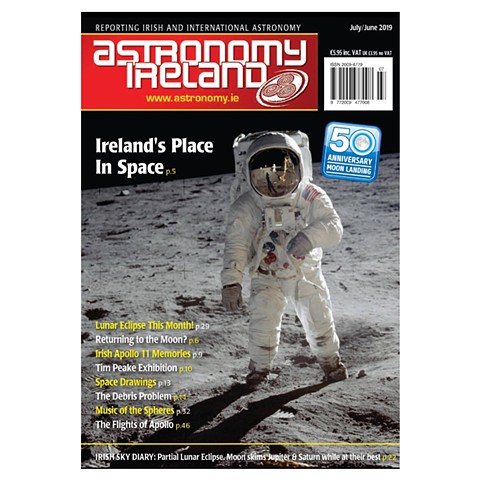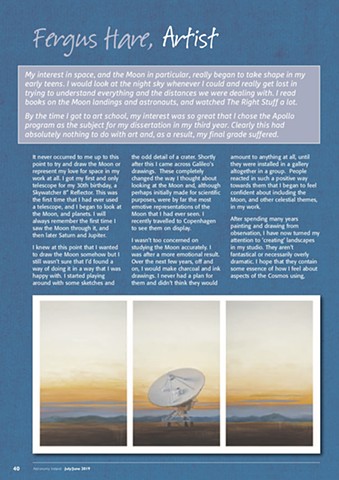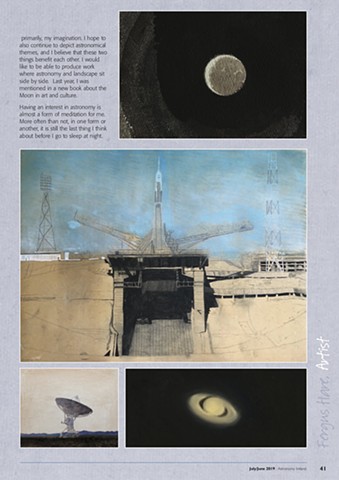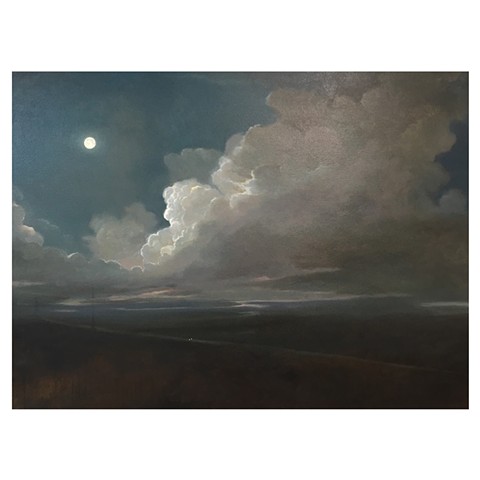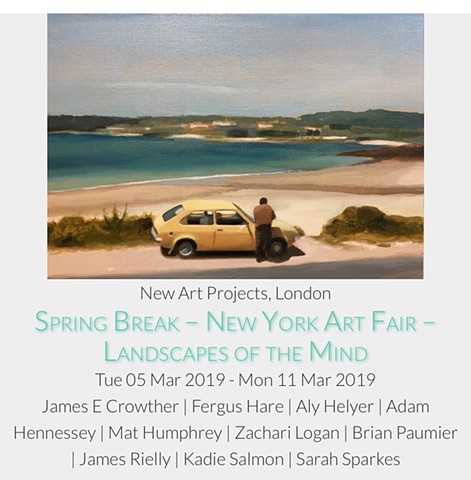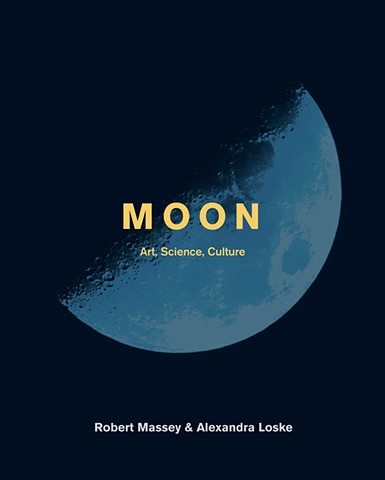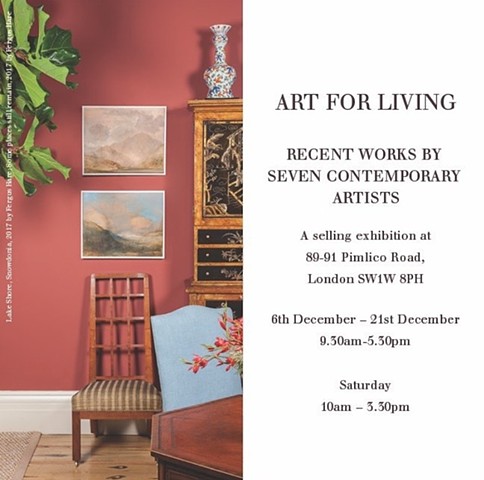New Paintings by Fergus Hare Press Release
Fergus Hare - PLEASE DON'T HURT ME - Canvas to Cover
MURDER IS EASY by Agatha Christie. Illustrated by Fergus Hare
Please Don't Hurt Me - press release April 2024
Please Don't Hurt Me - Solo exhibition North House Gallery, May 2024
Chichester Observer May 2023
Preview of Fergus Hare - Paintings - in ROSA Magazine May 2023
FERGUS HARE - PAINTINGS - OXMARKET CONTEMPORARY
FERGUS HARE - PAINTINGS
OXMARKET CONTEMPORARY, CHICHESTER
MAY 2ND - 20TH 2023
PRIVATE VIEW ON MAY 2ND 6-8PMROSA (Review of Sussex Arts) Magazine article Summer 2022
NEW ART PROJECTS PRESS RELEASE FOR SPRING BREAK ART SHOW 2022
SPRING BREAK ART SHOW NEW YORK CITY September 2022
New Art Projects will be exhibiting work by Fergus Hare and Jonny Green at the Spring Break Art Show in New York City from September 7th-12th 2022.
FIGURE - A group exhibition at Cameron Contemporary Art in Hove, Sussex
FIGURE - A group exhibition at Cameron Contemporary Art in Hove, Sussex September 2022.
Article inside ROSA magazine
ROSA (Review of Sussex Arts) Magazine
Fergus was featured on the cover of the first issue of ROSA magazine Summer 2022.
FERGUS HARE - published by New Art Projects in 2022
FERGUS HARE - published by New Art Projects in 2022 with over 80 artworks, and an essay by Jenny Uglow.
Press release for FERGUS HARE - New Paintings at The North House Gallery October 2021
Review of 2020 Exhibition by Sean Worrall
Fergus Hare at New Art Projects, East London, Oct/Nov 2020
It isn’t that Fergus Hare’s paintings throw out challenges, these paintings don’t hit you with big questions, they don’t offer debate or concern themselves with the point of it all, they don’t react to this movement or that statement or where art is at this week, it isn’t like he’s on the cutting edge or indeed any kind of edge and that’s the vital thing here, none of that matters with Fergus Hare, he doesn’t need to be, he is simply just a beautiful painter. Fergus Hare is simply a wonderful wonderful painter, an uncomplicated painter and to see his work in the flesh it just such a glorious set of delicious treats. His paintings, be them the mountain tops, the satellite dishes in that very English light of his or here, this time around, the wonderful crowd scenes and the flow and the folds of the clothes and the light on them and and and…. Those crowd paintings really do just have something very very special to them, his mountain tops are magical, his light is there to drink in, those crowd scenes are something very very special though (and his lockdown washing painting add a little smile in the face of it all – a smile in the face of the lockdown I mean). I could stand in this room for hours with these paintings, I could gush about them for hours, there’s something very simple about this, uncluttered, something far from simple of course but it is all simply beautiful and sometimes that is all it needs to be – just a wonderful painter, a spiritual painter, a very English painter, just a wonderful painter.
SOLO EXHIBITION NEW ART PROJECTS
Solo Exhibition of paintings made in 2020
New Art Projects, Sheep Lane, London E8
November-December 2020 (Dates TBC)SOLO EXHIBITION
SOLO EXHIBITION
Regency Town House
13 Brunswick Square
Hove
BN3 1EH11th-17th November 2019
Private View: Thursday 14th November 6.00pm-8.00pm
www.rth.org.uk
Article in ASTRONOMY IRELAND MAGAZINE
JULY 2019 Issue. Order a copy at www.astronomy.ie/join
MOON GAZING, Fitzroy House, Lewes
Group exhibition
Fitzroy House
Lewes
BN7 2AD
June 7th-23rd 2019NORTH HOUSE GALLERY, MANNINGTREE, ESSEX
Selected work by: Esmond Bingham, Kate Boxer, John Christie, John Cobb, Daisy Cook, May Cornet, John Dugill, Helengai Harbottle, Fergus Hare, Vanessa Jackson RA, Alan Kitching, Oliver Soskice, Telfer Stokes
11th May-29th June 2019
PALE FIRE - New Writing on the Moon
To be published by The Frogmore Press, May 2019
REVIEW OF SOLO EXHIBITION AT NEW ART PROJECTS 2019
by Sean Worrall for The Organ
The thought of another Fergus Hare show at New Art Projects is genuinely exciting, Fergus is what you might call a very traditional artist, an almost refreshing prospect in these fractured times, his subtle studies of twilight, his feeling for Sussex and that particular light, the idea of being here at his opening tonight is far more inviting that the bombardment from The Other Art Fare and their various PR arms and marketing teams, feels like an escape from everything in here with the gentle light on the hills. You don’t notice that this time he’s been working in pastel at first, his landscapes are once again alive with tranquil space, with hazy atmosphere, with the beauty of horizon. Surely landscape pieces like this really shouldn’t be that exciting in 2019. The pastels seem even more refined than his oils (or is it just his work evolving? It isn’t quite about the “romance of the English Countryside”, it is about a moment caught, about that something special, that thing you only really get from standing there at the right moment and experiencing “it”, experiencing that line, that horizon, that light, that moment. I love the work of Fergus Hare, I make no apology for saying so, i was really looking forward his new works, he hasn’t disappointed. Not everything is perfect here, now sure if he gets the Welsh mountains quite like he does the twilight of Sussex, not sure about that larger planet Uranus. piece, but so much of his work almost is perfect and when did a truly great painter get it right every single time? Fergus Hare is one of my favourite artists, there’s an attachment to what he does, a spirit, a real feel, working in pastel isn’t that much of a departure, it isn’t really about the medium, it really is about what he does with his pastels or his oils, an excellent show… Thursday delivered… (sw)
SPRING BREAK ART FAIR, NEW YORK CITY, NY
MOON
SOLO EXHIBITION
NEW WORKS
New Art Projects, London E8
March 14th- April 27th 2019Press Release ART FOR LIVING at Sibyl Colefax & John Fowler 2017
Sibyl Colefax & John Fowler, renowned interior designers, are delighted to present a forthcoming exhibition Art for Living, in association with Fred Mann and New Art Projects. The exhibition will be held at the new Pimlico Road showrooms from Wednesday, 6th December to Thursday, 21st December.
“Increasingly our decorating and design commissions for private clients include modern pictures and objects. Exhibiting such works away from the traditional monochrome gallery setting and into a location with a sense of residential scale and colour makes for a far more dynamic and engaging show.
Works by the seven different artists will be hung throughout the space, creating a unique opportunity to create striking juxtapositions with our antique and contemporary furniture, ceramics and accessories. Allowing the viewer a greater insight into how such pieces can work within a home” says Philip Hooper, design director for Sibyl Colefax & John Fowler.
The seven artists selected by Fred Mann, director of New Arts Projects and Philip Hooper, are Fergus Hare, showing some of his landscapes of the south coast of England. Beautiful small paintings evoking twilight and pay homage to Samuel Palmer and the English landscape tradition. Canadian artist Zacharai Logan will show his delicate drawings of floral wreaths together with a monumental pastel work of an urn filled with wild flowers native to Canada. Mat Humphrey will install some new elegant monochrome panels which reference the movement of light and sound through water. Kadie Salmon, a young Scottish artist who creates delicate hand-coloured photographs, will be showing pieces from her residency in Trondheim, and from her studio award at The Florence Trust. James Crowther, a British painter specialising in touching portraits of his subjects, has had work exhibited in a number of major UK collections including the National Portrait Gallery. Jack Milroy is represented by his signature acrylic boxes containing three-dimensional cut- out work. Hedley Roberts will exhibit one of his compelling and vibrant portraits that reference the way we portray ourselves on social media sites such as instagram.
“ We decided to show these contemporary artists in a stylish and residential setting as we all live with visual art. The rooms at Sibyl Colefax & John Fowler provide the ideal setting in which to enjoy it” says Fred Mann.REVIEW OF ENGLISH MAGIC AT NEW ART PROJECTS 2015 by Mickey Georgeson
Fergus Hare has the clearest art-historical link to a Neo-romantic English kind of magic. His chosen motif of the moon illuminates a direct passage to the ethereal realm of Samuel Palmer’s cocooning countryside. Hare’s work is as much an essay in the alchemy of ostensibly traditional painting techniques (glazing, scumbling, al la prima) and their ability to summon up a fleeting glimpse of wonder as it is about the history of English painting’s connection to the spiritual essence of landscape. Standing before his nocturnal scenes one is reminded of the ever-receding possibility, in a digital age, of escaping context when gazing up at the night sky. Like all good magic there is an element of risk to Hare’s work because the moon itself has always been an immutable symbol right from when it was first witnessed. To make the moon reappear as object of wonder is the show’s finale.
Fergus Hare *Beneath the Moon* October 10 - 25 Observing clouds and space
In his landscape painting Fergus Hare gives us constants that we perhaps associate instinctively with this genre: trees, hills, a glimpse of the sea, often the moon, but most of all skies. Cloud-filled, busy, moving, ever changing skyscapes that cast a mood on the landscape below. It may help to understand and appreciate the effect of his work even more knowing how he works. He paints mostly outdoors, en plein air, sketching what he sees, with some manipulation of what appears in the finished painting. Figures are rare, as he does not want to give the impression of staging them like ornaments in the composition, but if they appear during a painting session then they may well become part of the work. He believes in the importance of observation and resists working from photographs. As much work as possible is carried out in the open, with some finishing touches applied later in the studio, in order to retain the immediacy of the initial sketch. Motifs and locations seem to come to him; he does not go out in search for the perfect spot but paints instinctively what he encounters, without an apparent emotional attachment to a particular area. It is very tempting to compare him, on the grounds of subject matter, style and working methods, to the great masters of British landscape painting. The most obvious point of reference is perhaps John Constable, especially as Fergus’s small format oils bear a sometimes uncanny resemblance to Constable's oil sketches. He admits that the Romantic period has always been his favourite and he has been greatly inspired and informed by Constable, Joseph Wright of Derby and Thomas Gainsborough. However, he also makes that point that, 'I never wanted to copy the great painters from that period, but I wanted to be as good as them. That's what we should aspire to, being as good as we can be.'
Fergus’s palette is limited, comprising a handful of colours only, created from a few select pigments: Payne's Grey, Brown-Black, Burnt Umber, Burnt Sienna, Prussian Blue, Yellow Ochre, Cadmium Red, Olive Green, Naples Yellow, Titanium White and flesh tints. There is a deliberate and measured minimalism to his work that makes us look again and again at the same deceptively simple composition. At first glance we may see an identifiably English or Irish landscape and could be forgiven for attributing the vague term ‘timeless’ to it. We might even think of it as an image of the past, as Fergus uses the same basic iconography as the great British landscape painters of the late 18th and early 19th century, depicting a pre-industrial idyll of unspoilt lush nature. But look closer and it becomes clear that his landscapes are very much of this century, with subtle but unmistakable references to the time of their creation. The odd telegraph mast, a hint of contemporary architecture, the absence of anachronistic picturesque elements such as carts or old farming equipment.
In a key work of this show, We Live, We Die, Fergus links past, present and future, by placing a space shuttle, an object that epitomises technological advances and is a symbol of the possibility of other life forms, other worlds, into a Romantic context of cloud formations and more than a hint of the Sublime. He rightly states that surely, given the interest that many Romantic painters had in meteorology and astronomy, they would have embraced the notion and visual richness of space travel. To Fergus, the inclusion of the shuttle makes perfect sense, as it is enfolded in what he is passionate about: clouds. Although he considers him further removed from Turner than other artists of that period, We Live, We Die has perhaps the significance for Fergus that the steam train had for Turner in Rain, Steam and Speed (1844). This ambitious canvas may also mark a new and more experimental phase of his career. Unlike most of his other work, We Live, We Die is based on a photograph from a photo essay on the last days of shuttle programme for the National Geographic.
Fergus Hare can without a doubt be seen in a tradition of Great British landscape painting, bringing the genre into the 21st century while referencing and drawing inspiration from the past and future. He meticulously observes each chosen location, but looks at it with an artist's eyes, taking some elements away, simplifying others. The narrative and visual power of his work lies in the depiction of natural light, atmospheric conditions and cloud formations. There is a language in the sky, and Fergus paints it, giving us the essence of landscape.
Alexandra Loske 2015
Dr Alexandra Loske is an art historian with a particular interest in late 18th and early 19th century European art and architecture. She works as a curator at the Royal Pavilion & Brighton Museums and teaches Art History at the University of Sussex. She frequently includes Fergus’s work in lectures about British landscape painting.
REVIEW OF ENGLISH MAGIC AT NEW ART PROJECTS 2015
by Sean Worrall for The Organ
Fergus Hare‘s oil paintings (of the Sussex landscape) are glorious, English magic indeed, “Rather than paint from the landscape on his doorstep, these works stem from the imagination. With a firm nod to the fantastical valley of vision of Samuel Palmer and the mysticism of William Blake” – and without any information save for the paintings themselves yes they do instantly bring Sussex and Palmer to mind, “Hare re-imagines the landscape as a dream-scape, on the edge of twilight”, a perfect place that surely can’t be real? Oh but it is, and brought to life in a very white Hackney basement, magical indeed, beautiful. Alongside Hare’s paintings, there’s also a cluster of charcoal drawings of the moon and planets. A solar system of the imagination, although the relatively small landscape paintings really do take all the attention in his room, they really are something special, something magical, English painting celebrated, English light, atmosphere, twilight, that place between the Downs and the sea, everything about these paintings is right.





